The ingredient: winter greens
Hallmark staff
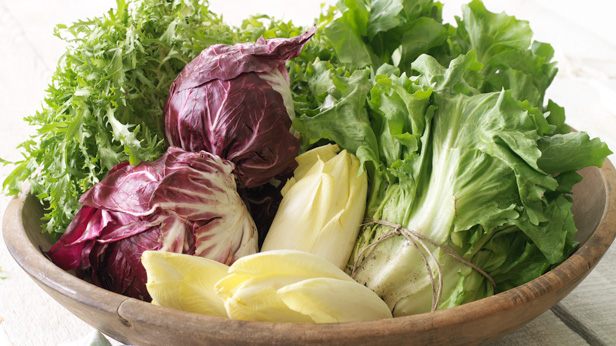
You might not expect a salad to satisfy an urge for cold-weather comfort food, but we're about to change your mind. By using a variety of hardy winter greens—in this case ones from the chicory family—you can have the satisfaction without the heft. Most members of this family, which includes frisée, radicchio, Belgian endive and escarole, are rich in vitamins and minerals (vitamin C, beta-carotene, folate and calcium). Our 3 salad recipes add hearty ingredients like bacon, roasted vegetables, nuts and cheese. The result? Simple winter salads that are simply satisfying.
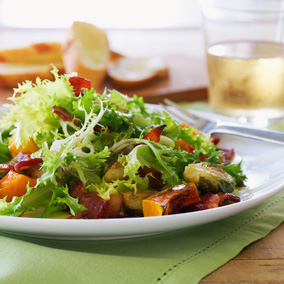
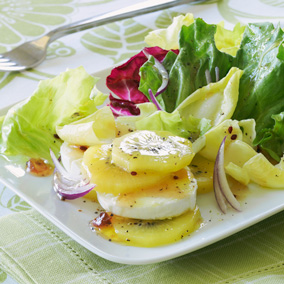
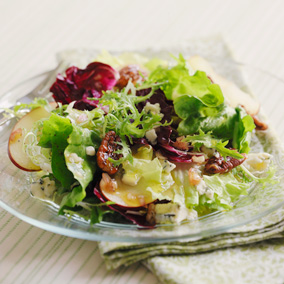
Did you know?
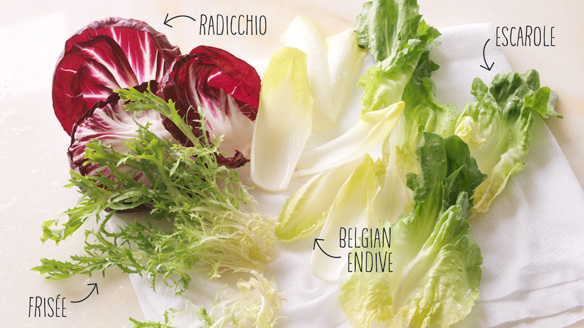
A guide to winter greens
- Frisée (frē-ˈzā): The name of this frilly green means "curly" in French, and it's the young, tender form of curly endive. (Mature curly endive has dark green upper leaves.) You can often find this green in bagged mesclun mixes.
- Radicchio (ra-ˈdi-kē-ō): This beautiful purple-leafed, white-veined vegetable has been popular in Italy since the 16th century. The two types most widely available in the United States (both named for their Italian origins) are radicchio di Verona—the size and shape of a grapefruit, used mostly in salads—and radicchio di Treviso, shaped more like romaine lettuce and often served grilled or sautéed.
- Belgian endive: This variety is complicated to grow and, as a result, pricey. When the plants are seedlings, their leaves are cut off. The roots are then dug up and moved to colder conditions to force tight, compact heads to form. When ready, the heads are cut, by hand, off the root base.
- Escarole (ˈes-kə-ˌrōl): The ancient Latin name of this slightly bitter green means "January plant." Also known as Batavian endive, it grows in loose heads of broad, wavy leaves; tear the younger ones into hearty salads and save the darker green leaves for soups.
Hungry for more? Check out all our recipes



